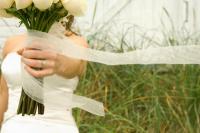In the middle of the night
"In the Middle of the Night" is a modern hymn. The text is by Sybille Fritsch, the melody was written by Fritz Baltruweit, who also wrote some melodies for the Protestant hymn book. The song speaks of hope and comfort, even in dark times.

An analysis of the song "In the Middle of the Night" is based on various aspects that can ultimately be connected with one another: form, melody, text and word-tone relationship.
Shape of the song
- "In the Middle of the Night" is structured as a two-part song, each consisting of a chorus and stanzas. The chorus comprises two eight-bar periods, the verse is also eight bars long.
- The key of the song is G major. A harmonic analysis reveals that the refrain follows the traditional pattern of front and back sentences. The melody begins with the tonic in G major, ends after the first eight bars - in the middle of the chorus - on the dominant D major and finally becomes the tonic G major again after a further eight bars returned. The stanza has a similar structure, it also begins in G major and ends in D major. This half-ending is intended insofar as each verse is followed by a new refrain, so that the song always ends with the tonic.
- The plagal closing at the end of the song, which leads from the subdominant C major to the tonic G major, is characteristic. This harmonic phrase is particularly suitable for a hymn, especially since it is certainly known to many worshipers from the compulsory "Amen" phrase.
Text - metaphors of night and light
- The song consists of three short stanzas, the chorus of which is both an introduction and an affirmation of the previous words. The words of the chorus consist primarily of metaphors. The "middle of the night" is a symbol for the greatest possible darkness, which in turn can evoke associations of fear, hopelessness and sadness. The "beginning of a new day", which lies in the middle of the night, stands for a new beginning, for comfort, hope, warmth and light.
- In terms of content, the stanzas are structured as an increase. In the first stanza it says "I want to see light", in the second already "I want to be light". To see light means to draw hope and courage, to be light means to pass it on to others, which is an even stronger image. Finally, the third stanza says "Let's see light!" and in this way calls for community and common trust in God, which can break through the eternal night.
- A second increase in the stanzas, which are all structured according to the same sentence pattern, results in the words that speak of the desire for action. The first stanza says "to find the right ways in solitude", in the second already "to find the right words that love awakens". The word "love" evokes much stronger and more positive associations than the word "loneliness". This idea is confirmed in the third stanza, in which it says "to go on our ways where none Disaster threatens "because here the focus is once again placed on the community that is so important for faith is.
You like pop songs and would like to write some yourself, but you don't know where ...
In the middle of the community - melody and word-tone relationship
- The rhythm of the song is largely based on the normal speaking rhythm. These are primarily quarter and eighth notes so that the melody is easy to sing and catches your ear.
- The fact that the melody partly tries to illustrate the text falls e.g. B. on the second line. With the words "in their dark earth", more precisely with the word "dark", the melody is on theirs It had reached its lowest point, while immediately afterwards with the words "hope blossoms" her top note achieved.
- In the first stanza there is a longer pause after the word "loneliness", which interrupts the flow of the melody, as if she wanted to translate the loneliness and emptiness visually and acoustically.
All of these observations help make this song so suitable for worship - a pastor might use it for example. B. as part of his sermon - and because of its catchy and concise melody, especially younger people like to sing it.
How helpful do you find this article?


